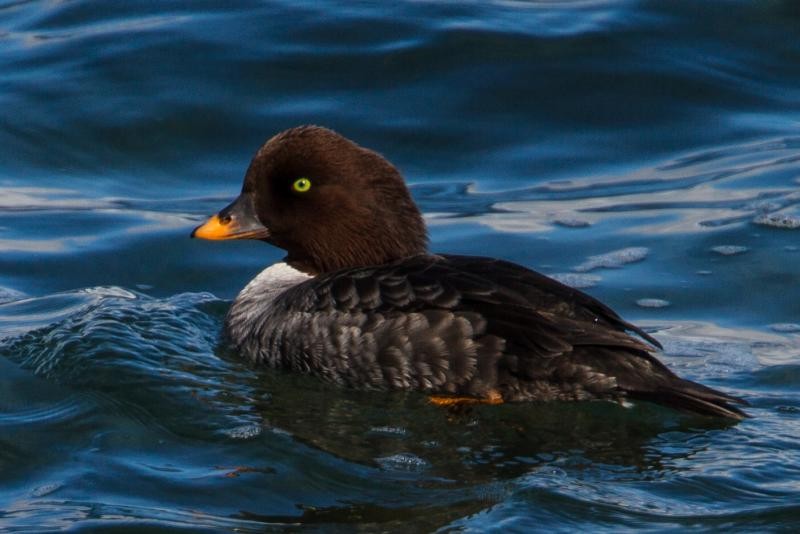Barrow's Goldeneye
A species of Goldeneyes Scientific name : Bucephala islandica Genus : Goldeneyes
Barrow's Goldeneye, A species of Goldeneyes
Botanical name: Bucephala islandica
Genus: Goldeneyes
Content
Description People often ask General Info
Description
Adults are similar in appearance to the common goldeneye. On average, adult males are 19.2 in (49 cm) long and weigh 2.13 lb (970 g); females are typically 17 in (43 cm) long and weigh 1.31 lb (590 g). The Barrow's goldeneye has a wingspan of 27.6-28.7 in (70-73 cm). Adult males have a dark head with a purplish gloss and a white crescent at the front of the face. Adult females have a mostly yellow bill. The male Barrow's goldeneye differs from the male common goldeneye in the fact that the common goldeneye has a round white patches on the face, less black on the back of the bird, a greenish gloss, and a larger bill. For the females, the common goldeneye has a less rounded head, and a bill in which only the tip is yellow. 
Size
41 - 51 cm
Life Expectancy
18 years
Nest Placement
Cavity
Clutch Size
6 - 12 eggs
Incubation Period
1 brood
Number of Broods
29 - 31 days
Feeding Habits
Barrow's Goldeneye's diet consists primarily of aquatic invertebrates, varying seasonally. In summer, they feed on insect larvae including damselfly and dragonfly, also consuming some vegetation. Winter diet shifts to mollusks and small fish. They forage by diving, dislodging rocks to access prey, and often surface to eat larger items.
Habitat
Barrow's Goldeneye's natural habitat includes shallow freshwater environments like wooded lakes and ponds in subalpine and alpine regions, often associated with coniferous or aspen woodlands. These birds nest in areas rich with black spruce, balsam fir, and white birch up to 6,100 feet in altitude. In winter, they prefer sheltered saline waters such as bays and inlets, focusing on shallower zones and mussel-rich coastal regions.
Nest Behavior
The nesting process sees barrow's Goldeneye's females selecting and maintaining the nest, reusing successful sites. They incorporate existing materials and their own feathers. Nest building and egg-laying timelines are undocumented here, but typically similar species have set breeding seasons. Females solely incubate eggs and care for chicks.
Nest Characteristics
Barrow's Goldeneye nest typically in cavities in dead trees near water. They often use old woodpecker holes or natural hollows in trees, rock crevices, haylofts, and are also known to adopt nest boxes. The nests are found at heights ranging from 6 to 48 feet and lined with breast feathers.
Dite type
Aquatic invertebrate eater
People often ask
General Info
Feeding Habits
Bird food type
Bird Feeder Type

Platform
Behavior
Barrow's Goldeneye exhibits a range of complex and memorable courtship behaviors, notably the 'kick' and 'rotary-pumping', that occur both individually and in sequences. These displays are often reciprocated by females with their own distinctive head motions. Beyond courtship, barrow's Goldeneye displays monogamous pairing and territorial defense, with males aggressively guarding their mates during egg-laying and females protecting their brood territories. Daily activities likely include foraging, preening, and social interactions within their preferred habitat of lakeshores during winter.
Species Status
Not globally threatened.
Scientific Classification
Phylum
Chordates Class
Birds Order
Waterfowl Family
Geese Genus
Goldeneyes Species
Barrow's Goldeneye 